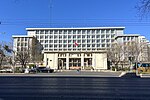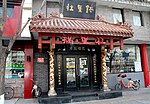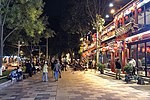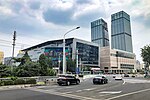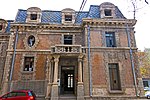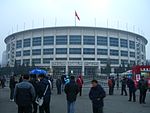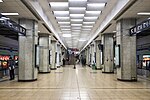New Beijing Poly Plaza
2007 establishments in ChinaBuildings and structures completed in 2007Buildings and structures in Beijing

The New Beijing Poly Plaza is a building complex in Beijing, China. Completed in 2007 for the China Poly Group Corporation, it houses the company headquarters, other office space, retail, restaurants, and the Poly Museum. The New Beijing Poly Plaza sits northeast of the Forbidden City on the 2nd Ring Road, near the Beijing Subway entrance of Exit D of Dongsi Shitiao Station of Line 2. Its large atrium looks out onto a major highway intersection and across the road to the earlier China Poly Headquarters.
Excerpt from the Wikipedia article New Beijing Poly Plaza (License: CC BY-SA 3.0, Authors, Images).New Beijing Poly Plaza
Dongmencang Alley, Dongcheng District Dongsi (首都功能核心区)
Geographical coordinates (GPS) Address Nearby Places Show on map
Geographical coordinates (GPS)
| Latitude | Longitude |
|---|---|
| N 39.9316 ° | E 116.426 ° |
Address
东门仓胡同
Dongmencang Alley
100010 Dongcheng District, Dongsi (首都功能核心区)
Beijing, China
Open on Google Maps
